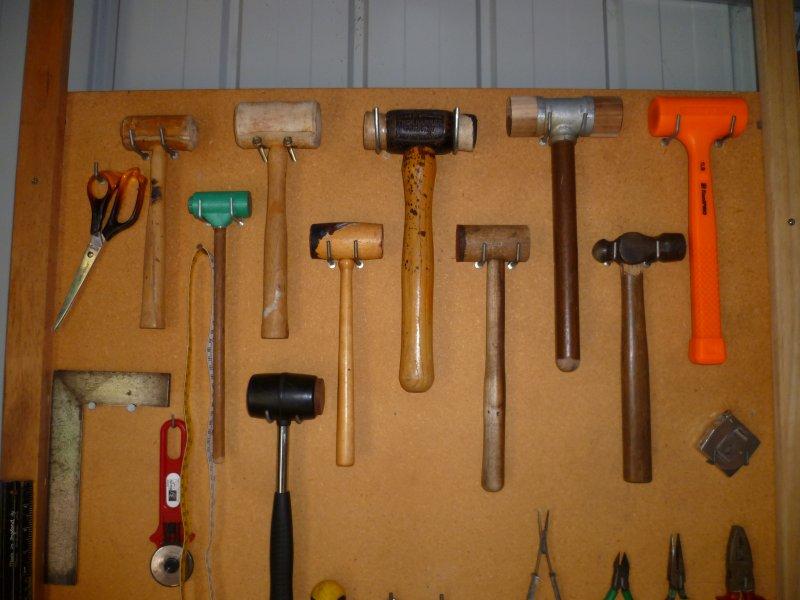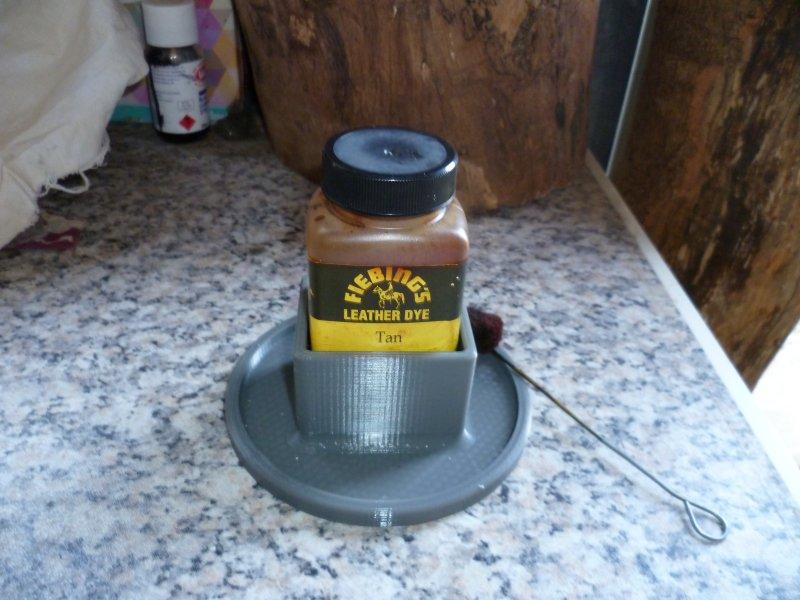-
Posts
4,791 -
Joined
-
Last visited
Content Type
Profiles
Forums
Events
Blogs
Gallery
Everything posted by dikman
-

Restoration for Juki LU-562 & upgrade to LU-563 Bobbin
dikman replied to Vinito's topic in Leather Sewing Machines
As you add other bits (with different colours) it's starting to tone down the gold colour. Not quite as much in-your-face effect. Looking better. -
You need to be more specific as Singer made a huge number of different machines, both domestic and industrial. Some will do what you want, many probably won't.
-

Restoration for Juki LU-562 & upgrade to LU-563 Bobbin
dikman replied to Vinito's topic in Leather Sewing Machines
I'm not sure if I like the colour or not, but you did a great job on the painting. -

Remington 1858 Holster.
dikman replied to Forester's topic in Gun Holsters, Rifle Slings and Knife Sheathes
That top Mexican Loop is pretty high, I'm impressed that you managed to poke that pouch down through it! -
Looks good for the money. Having made a rawhide maul (I won't be making another) I can tell you that they are a lot of work, take a long time and are a pain in the butt to make!!
-

Latest Holster
dikman replied to Hildebrand's topic in Gun Holsters, Rifle Slings and Knife Sheathes
It's called experience, and we all learn from it. The idea was good, just didn't work so well in reality (unfortunately). I made a copy of the holster used by Steve McQueen in The Magnificent Seven, which has a similar style of loop but I used Chicago screws to secure the flap. Glad I didn't try snaps or I would probably have had the same issue! -
These are in my leatherwork/reloading shed. My other sheds also have assorted hammers in them plus blacksmithing hammers in my forge. I've never thought about it before but I have a lot of hammers!
-
Nice. The one on the right looks like a sea-shell pattern, very fitting.
-
It looks to me like it's an early idea for a more efficient motor to replace a clutch motor, not necessarily designed to suit leatherworkers.
-

Servo motor running rough at low speed
dikman replied to DanishMan's topic in Leather Sewing Machines
You're quite right of course, Matt. If you sew things for a living (or even partial income) then time can be important and speed reducers can be an issue. For anyone who sews at speed then an NPS is definitely an asset. For me, as a rank amateur and hobbyist, slow speed is far more preferable for the control I get as it reduces the chance of making a mistake!! I also don't do long seam runs so slow speed isn't an issue there. One of mine does one stitch every 2 1/2 secs. at its slowest. A bit extreme, but impressive, I thought! -
The limited view of the control panel looks like it only has on/off buttons, so unless there is another panel somewhere to change settings I'd say that the motor speed range is as listed on the motor - min 500 rpm, max 3000 and is non-adjustable. Regardless of what you do to the machine the max. thread size this model will handle is #138. edit:I did some searching on the 'net and this is a "basic" servo with no separate electronic control panel, it's all built into the motor housing. 500 rpm is its slowest speed. If you want your machine to go slower then you'll need to fit a speed reducer.
-

Servo motor running rough at low speed
dikman replied to DanishMan's topic in Leather Sewing Machines
DanishMan, there is another recent post about the issues with NPS and pulley size/ratios. Changing the pulley on the motor shouldn't have any effect on the NPS but a much larger head pulley might (depending on the motor software). I have Lishui Skyrit motors and none of them would work properly once I changed the pulley ratio (about 3:1), they all threw error codes with the NPS connected. When I added the extra magnet, as per the posting, it stopped the error code but still couldn't be set reliably to either needle up or needle down. Some brands seem to work ok, others don't. What is the pulley ratio on the one that works? As I also mentioned there, however, in my opinion once you slow a machine down that much an NPS is a bit redundant. -

Servo motor running rough at low speed
dikman replied to DanishMan's topic in Leather Sewing Machines
I agree with Matt. Mine have a noticeable "roughness" at very low speed but fitting speed reducers or using a larger pulley on the head unit tends to smooth things out. The downside to this is that needle positioners may not work when gearing down, but then if you're slowing the stitching speed right down you don't really need a needle positioner. -
1/4" leather is not considered heavy leather and any upholstery-class machine should handle it, but yes, more info needed - what do you want to sew, thread size, budget etc.
-

Servomotor - Speedreducer - Needlepositioning/EPS
dikman replied to Pterytus's topic in Leather Sewing Machines
Pterytus, as I mentioned the "heel down" operation on mine is intermittent so not a lot of use. An NPS is doubtless great if you're doing high speed sewing but as Constabulary has re-iterated if you're slowing slowly then there is little to no benefit, and I think it's a safe bet that many on here sew their leather fairly slow. The whole idea behind fitting speed reducers is, after all, to try and tame the beast, so to speak. As I said before it's been an interesting experiment so thanks for posting, it obviously works for some servos, just not mine. -

Servomotor - Speedreducer - Needlepositioning/EPS
dikman replied to Pterytus's topic in Leather Sewing Machines
Well, the mod had an effect but still doesn't quite work right. Unfortunately I don't have the option of changing the sensor parameter from 1 to 2, it's there but not accessible so this may be the problem. I opened up the hole in the disc and glued a magnet in, which works fine. My Seiko has a large 8" pulley on the head which gives me about a 3:1 ratio. When I first fitted the NPS the motor simply wouldn't run properly, due to the ratio, and kept throwing up an error code. Fitted the modded NPS and now it will run fine but I can't set it to stop either needle up or down. What happens is if the needle is moving down when I take my foot off the pedal then it stops needle down, if it is moving up when I take my foot off then it stops needle up. Sometimes heel down sends the needle up, sometimes it has no effect. An interesting experiment nevertheless - so near and yet so far. Edit:I just re-read Captayne's post, referred to above, and I'm getting the same results that he did. While he thought that being able to "choose" whether you wanted the needle to stop up or down was great that will only work if you are sewing very slow, in order to "control" which direction you want it to stop. If you're sewing that slow then there's no need for the NPS anyway. -

Servomotor - Speedreducer - Needlepositioning/EPS
dikman replied to Pterytus's topic in Leather Sewing Machines
I opened mine up and it looks the same (other than having a metal housing). I'll glue a suitable magnet on later and see what happens. -

Servomotor - Speedreducer - Needlepositioning/EPS
dikman replied to Pterytus's topic in Leather Sewing Machines
Very interesting. Mine is one which doesn't work with a reducer and although I don't need one you've got me curious. -
I agree, beautiful things indeed. The first photo, two of them look like Spalted Maple? Just out of curiosity what do you make the heads out of?
-
Iron1951, you're doing great photowise. As for not having a cellphone, I don't have one either (don't need it) but I do have four digital cameras . Keep 'em coming, mate.
-

Free spill stand for Fiebings 440ml dye
dikman replied to chrisash's topic in 3D Printers and Lasers
Yours looked lonely on here Chris so I made one to keep it company. Yes, I could have made one out of wood and yes, it would have only taken 30 mins. or so compared to 6 hrs. 15min - but it wouldn't have looked as cool (0.2mm layers, 20% infill). -

Saved a Juki LU-562 from the scrap heap today...
dikman replied to Vinito's topic in Leather Sewing Machines
With a servo too! I hope you felt a slight tinge of guilt. I did what JJN suggested on one of my Singers, I found a fairly close match and just repainted the bed. -

Free spill stand for Fiebings 440ml dye
dikman replied to chrisash's topic in 3D Printers and Lasers
Obviously hasn't been used yet - no dye drips! Thanks Chris, looks better than the tub I use at the moment. -

Beeswax for holster finish
dikman replied to bcraig's topic in Gun Holsters, Rifle Slings and Knife Sheathes
Pretty simple, I used an old electric slow cooker my wife was throwing out, chopped up the suet and left it in there for several hours to reduce. I poured out the liquid to cool and gave the cruzzly bits left behind to the chooks. Doesn't get much easier. I told the butcher what I wanted to do and he gave me suitable scraps from the sheep carcasses, not quite the "pure" suet but worked fine for my needs. -
I would consider removing them altogether if you're opening it up. I doubt if many would use this connection these days.





